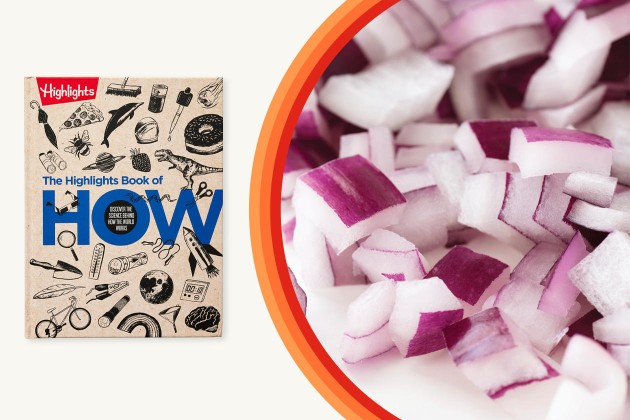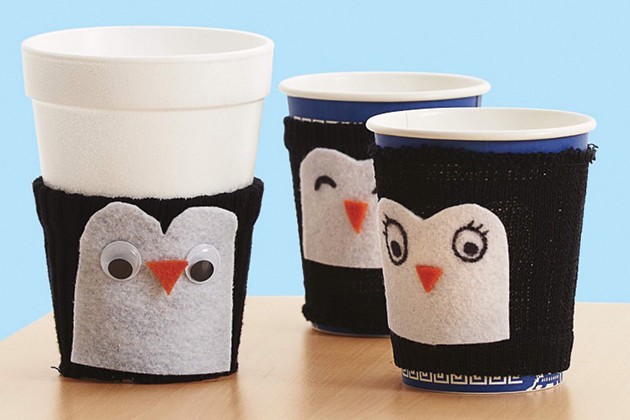Why Do Onions Make You Cry?
By: Highlights Editorial
Why do onions make you cry? The Highlights Book of How explains!
Lots of people love onions, but not all people love cooking with them. That’s because cutting into an onion isn’t always pleasant—in fact, it can make your eyes water!
The outside of an onion is wrapped in a papery skin. Beneath that, you’ll find the onion’s thicker, almost rubbery outer layers. Neither of those on their own are likely to cause you to tear up. But inside the onion, there’s something else.
Inside each one of an onion’s cells, there is a special substance known as an enzyme. An enzyme’s usual purpose is to speed up chemical reactions. When someone cuts into an onion, these blobs break open, and the enzymes are free to do their job.
Once released, these enzymes cause some of the other chemicals in the onion to form a new compound called syn-propanethial-S-oxide. This chemical is so light that it floats through the air, right into contact with the eyes of the person chopping the onion. There, it irritates our sensitive skin, causing our bodies to produce tears to wash the chemical away.
This chemical isn’t dangerous, but it can cause an unpleasant burning feeling. For many people, though, the annoyance is worth it for a tasty recipe.
How to Grow an Onion Garden
You don’t need a lot of room to grow onions. Plant some and watch them grow in a juice bottle.
What You’ll Need:
- Large plastic juice bottle, clean and with label removed
- Scissors
- Handful of small rocks
- Potting soil
- 6-8 small onions (or shallots)
- Duct tape
- Saucer
What You’ll Do:
1. Ask an adult to cut the top off the bottle so it is easier to put your hands inside.
2. Place the small rocks in the bottom of the bottle.
3. Put a layer of potting soil on the rocks that is about as deep as one of your onions is wide.
4. Ask the adult to cut three square or triangular holes in the sides of the bottle. The holes should be positioned just above the top of the potting soil layer.
5. Put three onions inside the bottle with their stem tips pointing out through the holes.
6. Cover the onions with soil.
7. Ask the adult to cut another three holes in the side of the bottle, and then repeat steps 5 and 6. Add as many layers as you can to the bottle—just make sure the onions have enough soil.
8. Ask the adult to cut three more holes in the top part of the bottle so that the last onions can poke out from there.
9. Use the duct tape to seal the top back on to the bottle.
10. Carefully add soil through the holes in the top until the last layer of onions is covered.
11. Add some water through the top holes.
12. Put your onion garden on the saucer and place it in a sunny spot. Check on your garden daily and water it when the top of the soil feels dry. Watch it grow!
How It Works:
This experiment wouldn’t work with any old fruit or vegetable. Onions and shallots are bulbs. If you could open up the bulb and look inside, you would see a tiny plant. This tiny plant is shielded by parts called scales. The scales not only protect the little plant, but they also store energy that the little plant needs to thrive. Put a bulb in good conditions by giving it water and light, and it’s good to grow!
Did you love this excerpt from page 260 of our new Book of How? With 352 pages of experiments, activities and answers to kids’ questions, the new Book of How is a perfect gift for inquisitive kids.









